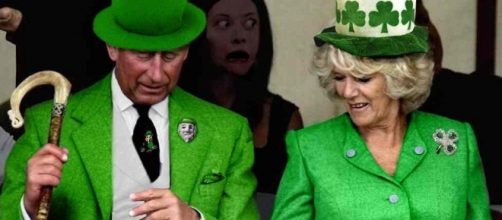Uncovering the roots of St Patrick's Day requires a trip back to the period 385-461 AD. It is difficult to decipher the fact from the fiction, since he lived so long ago when record keeping many not have been at an optimum level. As a result, we have many strange tales surrounding this saint, some of which have been deemed false. This article will deal with some of the more commonly acceptable themes surrounding the origin of this holy day.
Patrick's captivity
Born to wealthy parents in Britain, Patrick was taken prisoner by Irish bandits who plundered his estate.
He was taken to Ireland where he spent 6 years in captivity while working as a shepherd. During this time, he was lonely and isolated and turned to his religion for comfort. He became a devout Christian. According to his writings, after six years as a prisoner, he escaped from his captors after God told him in a dream that it was time to leave.
Return to Ireland
Patrick escaped to Britain after walking 200 miles. But in another dream, he was told by an angel to return to Ireland to do missionary work. He studied for some 15 years, at the end of which he was ordained as a priest. As an ordained priest, he returned to Ireland to minister to Christians and convert the Irish pagans. Many believe that Saint Patrick was responsible for bringing Christianity to Ireland.
After his death, reportedly on March 17th, AD 493, he was canonized by the Catholic Church.
Significance of the Shamarock
It is believed that St Patrick's Day was observed for some 1000 years, honoring the patron saint of Ireland, without of course, the parade and festivities that characterize the celebrations today. It would be a day for attending church followed by family feasts. A Roman scholar, Luke Waddington, in the early 17th century was credited with actually having this day declared a feast day in the Roman Catholic Church. The shamrock, a symbol of this day has also been linked to the saint. It is said that the Shamrock (the name given to the clover plant) was used by him to teach would-be converts about the Holy Trinity.
A religious observance
It was not until 1902 that St Patrick's Day was declared a national holiday by an Act of Parliament. Following that, another law was passed requiring pubs to be closed on March 17th; an Act that was only repealed in 1970, even though the first parade celebrating this feast was held in Dublin in 1931. And while the celebrations in Ireland have taken on a secular tone, it is still first and foremost a religious observance, which both the Church of Ireland and the Catholic Church hold sacred.
A worldwide celebration
Today the patron saint of Ireland is celebrated by both Irish and non- Irish, Catholics, Anglicans and protestants, and even non-Christians. You can find celebrations all over North America and as far as China and New Zealand.
Even Montserrat in the Caribbean celebrates this feast Day which is a national holiday there. For many who don't even know the origins of St Patrick's Day, it is merely a time for festivities, eating Irish food, drinking Irish Beer and wearing Green.

